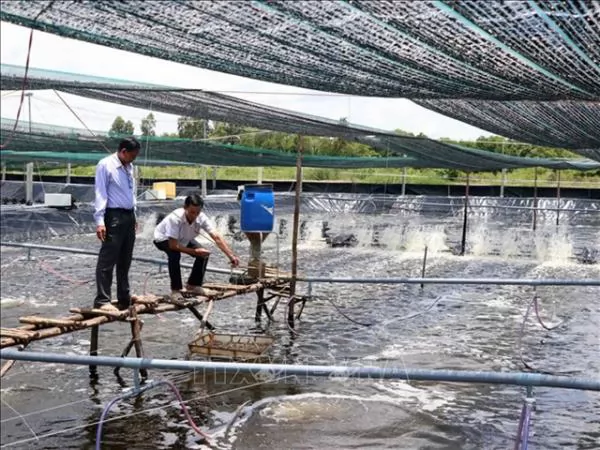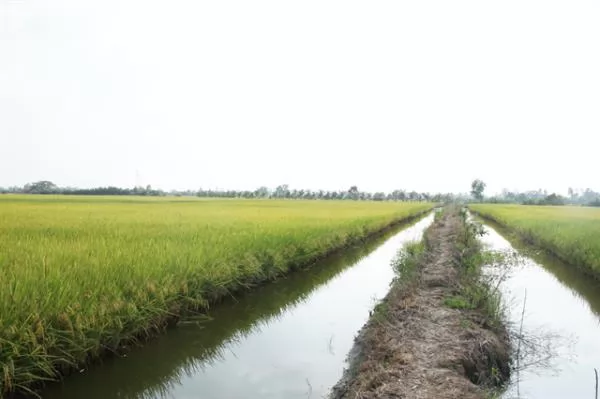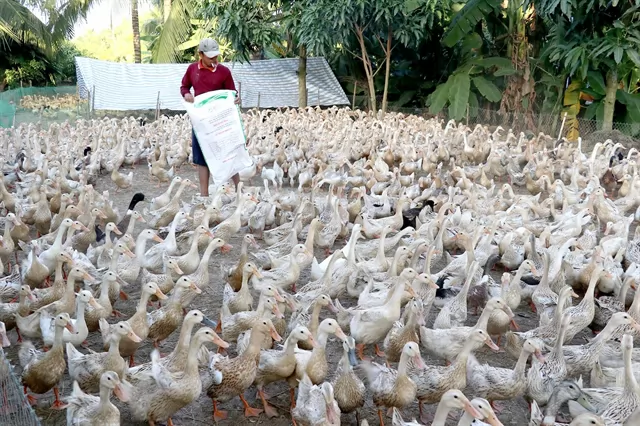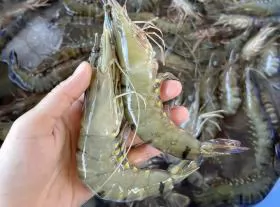Cà Mau tightens regulations on use of geographical indication for black tiger shrimp

Breeding shrimp under the super-intensive farming method in Hoà Tân Commune in Cà Mau Province's Cà Mau City. - VNA/VNS Photo Kim Há
CÀ MAU – The southernmost province of Cà Mau has strengthened regulations on the use of Cà Mau geographical indication for its black tiger shrimp to protect the rights of shrimp breeders and consumers.
The province, the country’s largest shrimp producer, was granted the Cà Mau geographical indication for black tiger shrimp in September by the National Office of Intellectual Property.
The province’s Department of Science and Technology is in charge of managing the Cà Mau geographical indication for black tiger shrimp.
The department has issued regulations that define the responsibilities and rights of organisations and individuals in their activities to control geographical indication usage.
The regulations cover procedures and guidance for inspecting the use of geographical indications to ensure the origin, quality, and reputation of the province’s black tiger shrimp.
It includes regulations on breeding and processing the shrimp, shrimp seed origin and geographical breeding areas, and the quality of end shrimp products bearing the Cà Mau geographical indication.
The Cửu Long (Mekong) Delta province has more than 300,000ha of aquaculture, including 280,000ha of shrimp, according to the province’s Department of Agriculture and Rural Development.
The province’s shrimp breeding area accounts for 45 per cent of the Mekong Delta’s total shrimp breeding area and 40 per cent of the country’s total shrimp breeding area.
Of the province's 280,000ha of shrimp, about 19,000 ha have been granted international standard certificates, including global good agricultural practices (GlobalGAP), Global Aquaculture Stewardship Council (ASC), Best Aquaculture Practices (BAP), and Vietnamese good agricultural practices (VietGAP).
Black tiger shrimp is one of the province’s key seafood products and the province’s many black tiger shrimp breeding areas have been granted international certificates.
The province plans to maintain its shrimp breeding area from now to 2030 but is enhancing output and quality by applying advanced farming techniques.
The province plans to develop five super-intensive shrimp breeding areas. Each area will breed shrimp under international quality standards.
Besides breeding shrimp under intensive farming methods, the province has advantages for developing extensive shrimp farming under shrimp – rice farming and shrimp – forest farming methods.
The province aims to have 40,000ha of shrimp–rice farming by 2025.
The province exports about US$1 billion of shrimp a year, accounting for about 30 per cent of the country’s total shrimp export value. Its shrimp is exported to more than 90 countries and territories. – VNS
Maybe you are interested

High-tech shrimp farming brings high profits in Bạc Liêu Province
BẠC LIÊU — The Cửu Long (Mekong) Delta province of Bạc Liêu plans to expand super - intensive shrimp farming as it is sustainable and offers high production value.

The export price of shrimp is rising, while domestic prices are abnormal
The export price of shrimp from Vietnam to several key markets has been rising in recent months, which has consequently impacted domestic shrimp prices.

Đồng Tháp to develop duck breeding
The Cửu Long (Mekong) province of Đồng Tháp is seeking to develop large-scale duck breeding from now to 2025.





